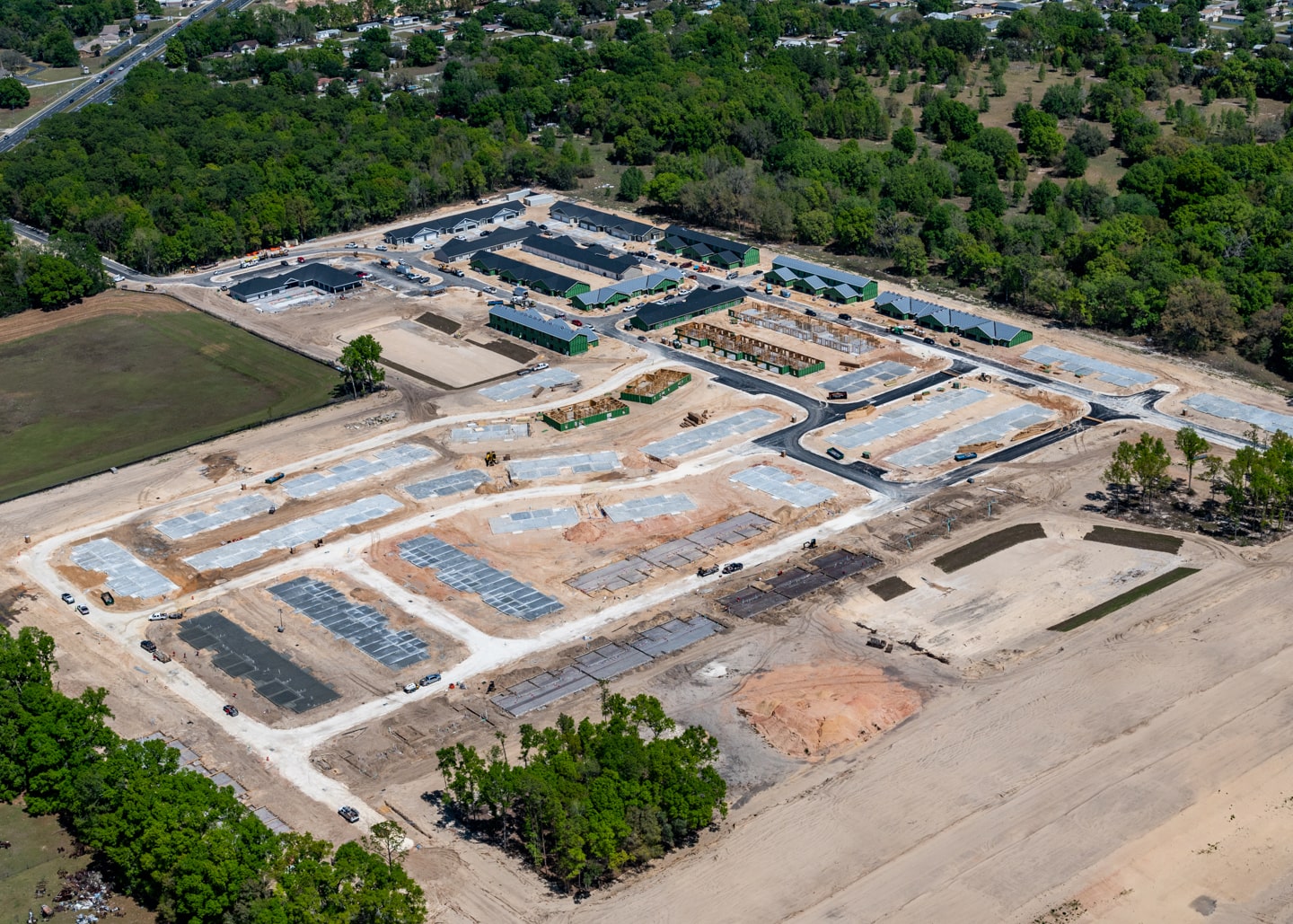From The Desk Of The CEO | May 9, 2023
Things to Know When Selecting A Site to Develop

Aerial view of our newest development, West Shire Village in Ocala, FL
From the Desk of the CEO
Real estate development can be a profitable and rewarding investment, but success largely depends on selecting the right site. The location of a development project is critical, and there are a variety of factors that must be carefully considered and evaluated before a final decision can be made. Here are some of the key things that developers typically look for when selecting a site to develop:
1. Population Growth: Population growth is a key indicator of demand for housing. Developers will typically look for areas where the population is growing, as this suggests that there will be increasing demand for new housing units. This can be measured by looking at demographic data, such as census data or population projections.
2. Job Growth: Job growth is another important factor to consider when selecting a real estate development site. Areas with strong job growth will typically experience higher demand for housing, as people move to the area to take advantage of employment opportunities. Developers will look for areas with a diverse range of job opportunities across various industries.
3. Market Rents at a Discount to Homeownership: Developers will typically look for markets where rental rates are lower than the cost of homeownership. This creates a strong demand for rental properties, as people may be unable or unwilling to purchase a home. This can be a good opportunity for developers to build and rent out units in areas with high demand for rental housing.
4. Market Supply and Demand Fundamentals: Developers will also evaluate market supply and demand fundamentals to assess the viability of a development site. This includes looking at factors such as recently delivered projects, future project pipeline, absorption rates, and vacancy rates. By understanding supply and demand dynamics in the market, developers can identify areas where there is a strong need for new housing.
5. Market Occupancy: Market occupancy is another important factor to consider when selecting a real estate development site. Developers will look for areas with high occupancy rates, as this suggests that there is a strong demand for housing in the area.
6. Market Rent Levels and Forecasted Growth: Developers will also evaluate market rent levels and forecasted growth to assess the potential profitability of a development project. By understanding current and future rental rates, developers can determine whether a project will be financially viable.
7. Proximity to Major Employment Hubs: Developers will typically look for sites that are close to major employment hubs, such as office corridors, higher education facilities, hospitals, and airports/seaports. This can help to attract tenants who are looking for convenient access to work or other key amenities.
8. Highway Access: Good highway access is also an important factor to consider when selecting a development site. This can help to attract tenants who rely on cars for transportation, and can also make it easier to transport materials and equipment to the site during the construction phase.
9. Grocery and Retail: Developers will also consider the proximity of grocery stores and other retail amenities when selecting a development site. This can help to make the site more attractive to potential tenants, who may be looking for convenient access to shopping and other services.
10. Parks/Recreation: Access to parks and other recreational amenities can also be an important factor when selecting a development site. This can help to make the site more attractive to tenants who are looking for a high quality of life.
11. Entertainment/Leisure: Developers will also consider the availability of entertainment and leisure amenities when selecting a development site. This can include things like restaurants, theaters, and other entertainment venues that can help to attract tenants who are looking for a vibrant and engaging community.
12. Expansions/Relocations of Major Employers in Market: Finally, developers will also keep an eye on expansions or relocations of major employers in the market. This can create opportunities for new housing developments that are located near these employers, which can help to attract tenants who are looking for convenient and accessible housing options close to their workplace. Additionally, the presence of major employers in the market can help to drive demand for commercial and retail spaces, making mixed-use developments a particularly attractive option for developers.
Keeping a close watch on these points can help developers identify potential opportunities for new projects and investments, and ensure that they are meeting the needs of the local community. And by providing a service that is needed by the community, you have already set yourself up for success.

Sincerely,
Ezra Stark
Chief Executive Officer

